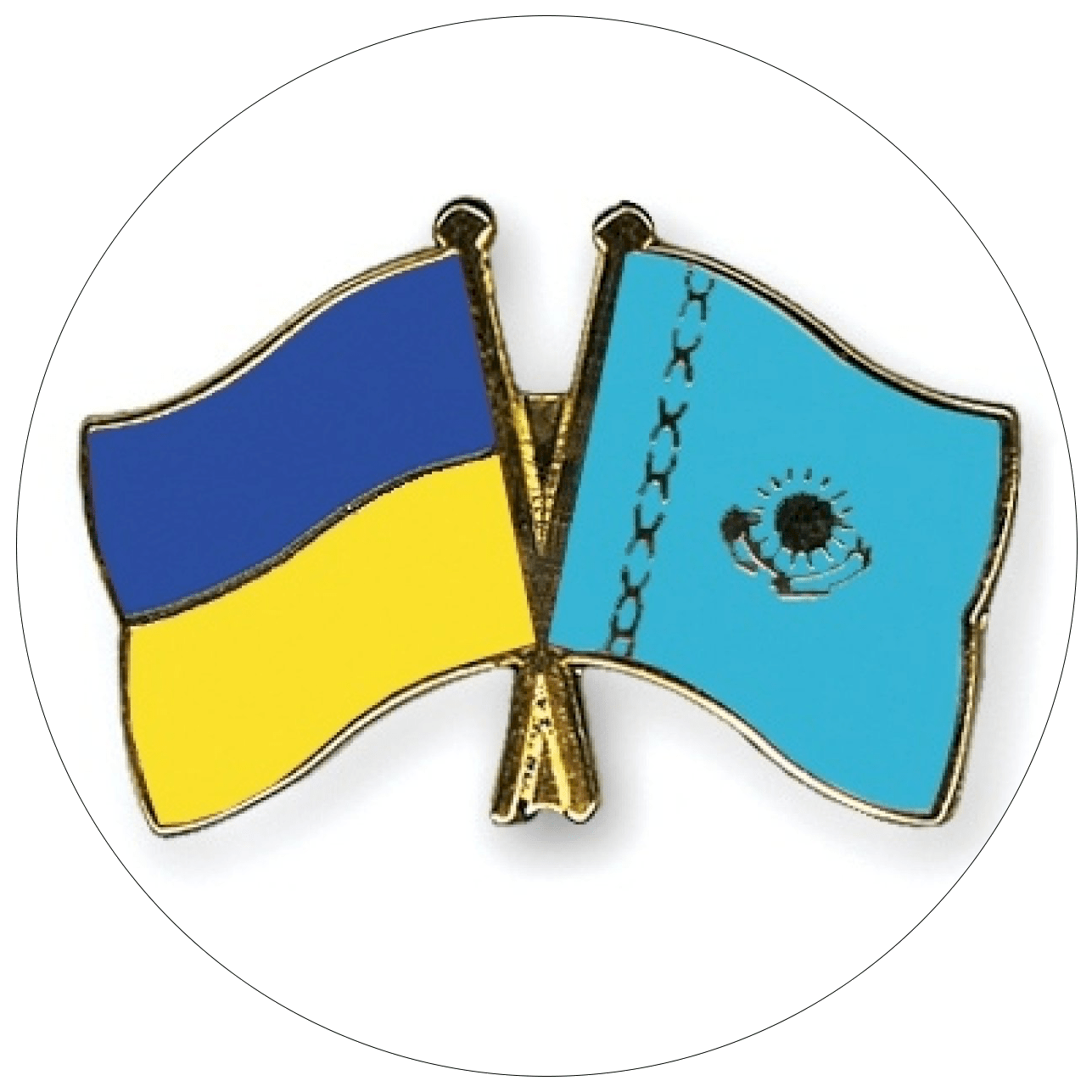Army of allies
Scale and structure of mutual direct investments
Let’s consider cooperation in use of factors of production. In two largest exporters of oil on the post-Soviet territory, Kazakhstan and especially Russia, private and partially state owned companies have accumulated relatively large financial resources and try to become trans-national. It is paradoxical that while Russia’s production mechanism and infrastructure deteriorates, the country has become one of leaders in the world by investments in other economies. During 2003 – 2005 Russia was 14th in the list of largest exporters of direct investments, coming ahead of all of developed countries except Hong Kong.
There are three main directions of exporting capital into post-Soviet economies. First is the oil and gas sector. Russia’s and Kazakhstan’s
Second is the banking sector. Having accumulated large financial resources Russian and Kazakhstani commercial banks actively expand to other post-Soviet republics. Russian banks control significant part of banking system in Armenia. Russian banks are also quite active in Kyrgyzstan, Kazakhstan, and increasingly active in Ukraine and Byelorussia. Kazakhstani banks directly and indirectly control large share of banking sector in Kyrgyzstan, increase expansion in Russia, and lately expand to Ukraine and Georgia.
Third is telecommunication sector. Russian mobile communication companies have acquired smaller operators in Kazakhstan, Uzbekistan and Tajikistan.
Judging by the data from the balance of payments, during 1994 – 2006 Russia directed only $6 billion of direct investments to the countries of CIS, which is less than 10% of direct investments abroad. The investments from Kazakhstan are a bit more oriented to the post-Soviet countries, but the volume of investments is not large. In the beginning of 2007 Kazakhstan’s direct investments into other CIS countries reached $599 million, which is 27% of Kazakhstan’s total direct investments abroad. Direct investments to Russia are almost $600 million, which is 43%, 25% — Kyrgyzstan, 15% — Uzbekistan and 11% — Georgia.
The statistics for the countries that receive direct investments from Russia and Kazakhstan confirms that these investments are relatively small. Among the post-Soviet countries Russia, Kazakhstan and Ukraine have the main flow of foreign direct investments (FDI). During 1991 – 2005 80% of FDI were directed to these countries; out of this Russia received 6%, Kazakhstan – 21% and Ukraine – 16%. Positions of Russian companies in Kazakhstan and Ukraine are very modest. Russian’s share in Ukraine’s accumulated received FDI was 5% in the beginning of 2007 (see figure 1).
With a low possibility of a mistake, we can assume that large share of Russian and Kazakhstani investments enter Ukrainian and other post-Soviet economies, including Russian and Kazakhstani themselves, under the flags of Cyprus, Virgin Islands, Netherlands, Austria and Switzerland. However, this is not Russian national capital rather global offshore capital that doesn’t work for its country of origin but uses the country in its business strategies.
The capital flows into post-Soviet countries are weekly connected with manufacturing industry. In the best case the old connections between companies that appeared to have different nationalities after the break-up of the USSR are maintained. In few cases these firms transformed into trans-national structures.
There haven’t been created any new manufacturing productions in the post-Soviet economies within the last 15 years. From the perspective of manufacturing industry the cooperation of post-Soviet economies is completely different from the cooperation experience of more developed countries, where manufacturing industry is the engine of regional cooperation. On the post-Soviet territory cooperation is based on resource, financial and trade sectors.
Figure 3 explicitly shows the finance – resource orientation of Russian investments. In the beginning of 2007 Russian investments in Kazakhstan, second largest recipient of FDI after Russia, have the following structure: 57% in financial activities, 16% in mining, and 10% in trade. Only 6% of accumulated Russian investments were directed to manufacturing industry. And 5% of them were directed to transport and communication.
Spontaneous market relations
Despite an obvious increase in transparency of trade flows within the post-Soviet territory, a large share of the flows is not included into official statistics. Secretive redistribution of factors of production is continuing to take place among newly independent countries. There are two large scale spontaneous processes: labour force migration and unregistered trade.
Along the boarders of the countries there are many areas not covered by the customs, and unofficial import enters the post-Soviet territory through these areas in large scale. Kyrgyzstan is one of the large areas like that. In 2002 in Kyrgyzstan, when the country has exhausted all of the international aid aimed at the so called “market reforms”, a dramatic increase of unregistered imports from China took place (see diagram 4).
Kyrgyzstan has become a large channel for Chinese goods entering the post-Soviet markets. In 2006 unregistered import from China amounted to $1,89 billion, which is more than 7 fold bigger than the official import from China, 2,4 times bigger than all imports from CIS, and reaches 2/3 of the country’s GDP. Obviously, the Chinese goods that cross the Kyrgyz-Chinese boarder are not all directed to small Kyrgyz market; the goods are transported to the markets of Central Asia (mainly Kazakhstan) and Russia. Given that economic growth in Kazakhstan and Russia driven by inflow of petrodollars is unlikely to slow down in the near future, Chinese trade expansion into the markets of these countries will also grow.
In the recent years the increasing flow of unregistered imports from China has also been going through Kazakhstan. In 2005 – 2006 unregistered import from China to Kazakhstan reached $2,6 – 2,8 billion annually, which is 11,5 – 2 times larger than the official import from China (see figure 5).
Eastern regions of Russia, Byelorussia and Kaliningrad oblast are also large channels for transit of unregistered imports into post-Soviet territory. Easily penetrable boarders of partners within EEC (Eurasian Economic Community), UEA (United Economic Area) and SCO (Shanghai Cooperation Organization) greatly undermine the efforts to control “grey imports”. Besides, it is obvious that the growing part of imports into Russia registered as imports from CIS countries are actually Chinese products. Hence, it seems that the groups in supporting integration among the CIS countries protect the export interests of China rather than of the post-Soviet producers.
Labour migration has also reached a significant scale. According to conservative assessments, 7 – 8,5 million people are involved in international migration within post-Soviet economies. The main centres of gravity for migrants are Russia and to less extent Kazakhstan. The donor-countries of labour migration are Armenia, Azerbaijan, Georgia, Kyrgyzstan, Tajikistan, Moldova, Uzbekistan, Ukraine and to some extent Byelorussia.
Table 6 contains rough estimates of economic significance of labour migration for post-Soviet economies with excess labour supply. Some points deserve special attention. Firstly, large share of economically active population is involved in labour migration. For example, in Kyrgyzstan, Moldova and Tajikistan up to 1/3 of economically active population is involved in labour migration, in Azerbaijan and Georgia the figure is 20 – 40%.
Secondly, approximately 70% of all labour migrants go to Russia. Mainly those are the migrants from Central Asia and Caucasus. Besides Russia many of these migrants also travel to Kazakhstan. Labour migrants from Ukraine are equally divided between Russia and Europe. International labour migrants from Moldova are mainly oriented towards Europe.
Thirdly, for the labour donor countries money transfers by migrants have become an important factor of economic development. The money transfers by labour migrants working in Russia amount to 11 – 14% of GDP in Tajikistan and Kyrgyzstan, 8% in Azerbaijan, and 5 – 6% in Moldova and Georgia.
The above assessments are more likely to be underestimated rather than overestimated. Judging by balance of payments, in 2006 in Moldova money transfers by labour migrants only through banks reached 18% of GDP, which is more than half of national exports and 2,5 times larger than inflow of FDI (see figure 6).
Money transfers by ethnic diasporas to Armenia (in this case it is impossible to separate money transfers by labour migrants) are in excess of 15% of GDP. These transfers, 70% of which are made from Russia, are 3 times larger than FDI and amount to 2/3 of national exports (see figure 7).
In 2006 in Kyrgyzstan money transfers by labour migrants reached 14% of GDP. The transfers amount to 1/2 of exports and 3 times larger than FDI.
Obviously, there must be strong factors stimulating mass labour migration on both the demand and supply sides. The economic growth in Russia and Kazakhstan, driven by petrodollars, has turned these two countries into attractive place for cheap low- and medium-qualified labour from Central Asia and Caucasus. Moreover, Kazakhstan is located close to Kyrgyzstan, Tajikistan and Uzbekistan. By 2010 Russian will experience a strong phase of depopulation. Hence, it will need greater imports of labour force.
In turn high growth rate of population in Azerbaijan, Kyrgyzstan, Tajikistan and Uzbekistan create continuous pressure on labour market and prepare more labour force for migration. Low standard of living for most of the population in Caucasus, Central Asia, Moldova and Ukraine also stimulates labour migration. The increasing socio-political instability has the same influence. “Tulip revolution” in Kyrgyzstan with subsequent permanent institutional chaos and disorder during spring-summer 2005 in Andijan, Uzbekistan have again prompted migration of non-indigenous population from Central Asia.
The countries that are at the receiving end of labour migration, are trying to control it. In order to achieve it, they toughen migration and labour legislation, increase administrative penalties that firms have to pay in case of using illegal labour force. However, these actions have limited effect. Widespread corruption and large scale of migration make it difficult to control the flows of labour force. Moreover, divergence among the post-Soviet countries by level of economic development and income levels is continuing, which strongly stimulates movement of labour force from poor to relatively successful countries.
Conclusion. Due to objective reasons, there are limitations to increasing economic cooperation among post-Soviet countries. Current trade-economic relations weekly influence the flows of goods and services, and redistribution of factors of production. The movements of goods, services, capital and labour are mainly defined by the influence of market factors.
Regional economic relations within post-Soviet territory are developing under conditions of globalization. In general, a healthy market regionalization and globalization could co-exist. However, taking into account the fact that all post-Soviet states aim at receiving a share of global trade and investment flows, and obtaining advanced technologies from developed countries, acquiring a niche in global division of labour is a priority for them.

 Поддержать
Поддержать
 Smart
Smart  Культурная среда
Культурная среда  Общество
Общество  Политика
Политика  "Законы XII таблиц"
"Законы XII таблиц"  Бизнес
Бизнес  Досье и мифы
Досье и мифы  Асар в Украине
Асар в Украине 


Комментариев пока нет